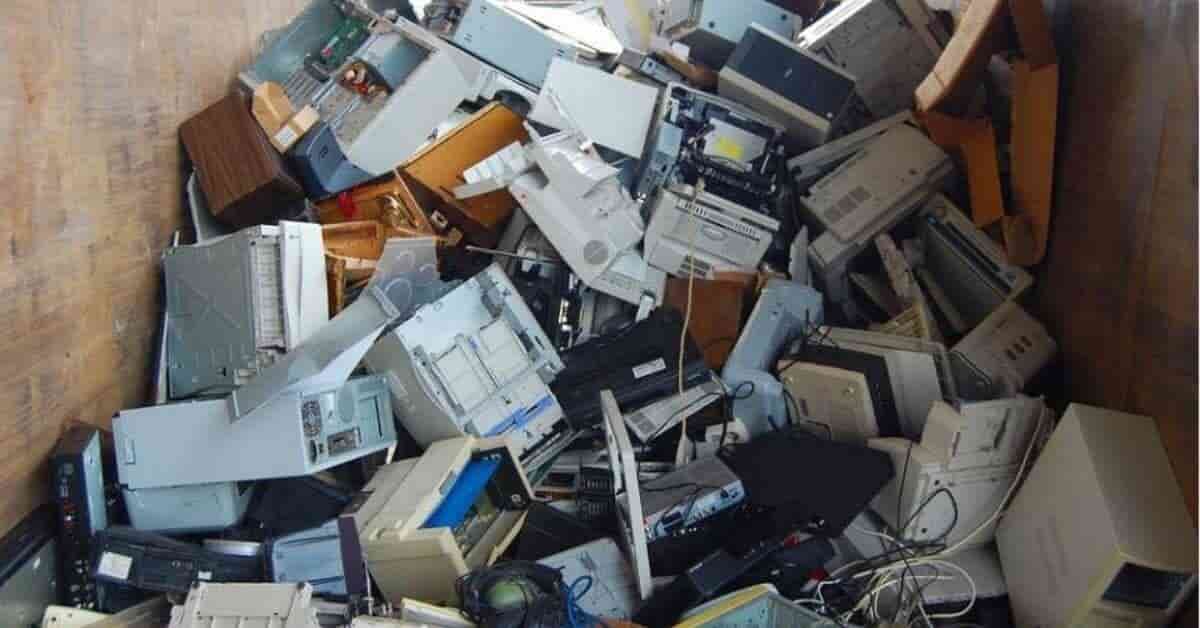E-waste is a problem that has been getting worse over the years. The term e-waste refers to any electronic product that has been discarded or is no longer used by the original owner. Even if you’re not the owner of an electronic product, you likely have a few in your home.
It’s estimated that around 20 million tons of e-waste are generated each year and only 35% of that is recycled. While it’s true that some e-waste can be recycled, much of it isn’t because it contains harmful toxins such as lead and mercury.
One way to avoid contributing to this problem is to buy products with longer life spans.
Table of Contents
What is E-waste?
E-waste, or electronic waste, is any type of electrical or electronic device that is no longer working or needed. This can include everything from computers and laptops to TVs and cell phones. E-waste is a growing problem because these devices contain harmful chemicals that can pollute the environment if they are not disposed of properly.
There are many ways to recycle or dispose of e-waste safely. Many cities have e-waste recycling programs where you can drop off your old devices. You can also check with your local trash and recycling center to see if they accept e-waste.
If you have an old device that you don’t know how to dispose of, there are plenty of resources online that can help. The EPA has a website dedicated to e-waste recycling, and Earth911 has a searchable database of e-waste recycling facilities across the country.
How E-waste can harm the environment?
E-waste is a growing problem in the world. It is estimated that only 15-20% of e-waste is properly recycled, and the rest ends up in landfills or is incinerated. This can be harmful to the environment for a number of reasons:
- Chemicals from e-waste can leach into the ground and contaminate water supplies.
- Burning e-waste releases harmful toxins into the air.
- Landfills are a major source of greenhouse gas emissions.
- E-waste contains valuable materials that can be reused, such as metals and plastics.
- Some components of e-waste, such as mercury, can be harmful to human health.
It is important to recycle e-waste properly to reduce its negative impact on the environment. There are a number of ways to do this, including:
- Donating or selling old electronics to charity or second-hand stores.
- Recycling e-waste through certified recycling programs.
- Contact manufacturers to see if they offer take-back programs for their products.
Environmental benefits of recycling E-waste
When it comes to e-waste, recycling is key to reducing its environmental impact.
E-waste includes everything from old computers and cell phones to TVs and printers. And while recycling e-waste can be a bit more complicated than recycling other materials, it’s worth it for the sake of the environment.
Here are some of the top environmental benefits of recycling e-waste:
- Recycling e-waste reduces the amount of harmful chemicals in the environment.
- Recycling e-waste conserves energy and natural resources.
- Recycling e-waste reduces greenhouse gas emissions.
- Recycling e-waste creates jobs in the green economy.
Impact of illegal e-waste dumping
The growing problem of illegal e-waste dumping is having a major impact on the environment and human health. E-waste contains a variety of harmful chemicals and heavy metals, which can leach into the soil and water when dumped in landfills. This can contaminate local ecosystems and harms plant and animal life.
Furthermore, when people are exposed to these toxins, they can suffer from a variety of health problems, including cancer, neurological damage, and reproductive harm.
What’s more, illegal e-waste dumping is often done in developing countries where there are few regulations to protect workers and the environment. Consequently, workers who handle e-waste are at a high risk of being exposed to hazardous materials. They may also be paid very little for their work, which creates a form of modern-day slavery.
The best way to combat illegal e-waste dumping is to support ethical recycling initiatives. Make sure you recycle your own e-waste responsibly and encourage others to do the same. You can also support organizations that are working to end this harmful practice.
What happens to e-waste after it’s recycled?
E-waste is a growing problem in the world. Every year, people throw away millions of tons of electronic waste, including phones, computers, TVs, and other electronics. While some of this e-waste is recycled, a lot of it ends up in landfills where it can leach harmful chemicals into the environment.
So what happens to e-waste after it’s recycled? The answer depends on the type of e-waste and where it’s recycled. For example, recycling centers in developed countries typically shred and separate e-waste into different materials like glass, plastic, and metals. These materials are then sold to companies that use them to make new products.
In contrast, recycling centers in developing countries often simply burn e-waste to extract metals like copper and gold. This process releases harmful toxins into the air and is bad for the environment. However, it’s often the only way these recycling centers can earn money from e-waste.
The best way to reduce the amount of e-waste is to reuse or donate old electronics instead of throwing them away. Recycling is also important, but it’s not always possible to recycle everything. When recycling is not an option, it’s best to dispose of e-waste responsibly. The worst situation is to dump electronics in the trash or on the ground.
When e-waste ends up in a landfill, it often ends up in waterways, where toxins can contaminate fish, birds, and plants. It can also create toxic dust that pollutes the air people breathe. More than anything else, you don’t want your old electronics turning into a pile of harmful waste. That’s why it’s important to follow these guidelines for disposing of your old electronics.
How to recycle your own e-waste
recycling your own e-waste is a great way to save money and help the environment. Here are some tips on how to recycle your own e-waste:
- Collect your e-waste. This includes any old or broken electronics that you no longer use.
- Sort your e-waste by type. This will make it easier to recycle later on.
- Find a local recycling center that accepts e-waste. This is the best way to ensure that your e-waste will be recycled properly.
- Drop off your e-waste at the recycling center. They will take care of the rest!
conclusion
E-waste is a growing problem in the world today. With the ever-increasing reliance on technology, more and more electronic devices are being disposed of each year. While some of these devices can be recycled, many end up in landfills where they release harmful toxins into the environment.
There are a number of ways to reduce your e-waste footprint. One is to simply buy fewer electronic devices. When you do need to upgrade, recycle your old devices responsibly. There are many e-waste recycling facilities around the world that can properly dispose of your old electronics.
You can also help by spreading the word about e-waste and its impact on the environment. Encourage your family and friends to reduce their own e-waste footprint and be more mindful about the electronics they purchase.
Together we can make a difference in the fight against e-waste.
| Visit Home page: 👉 | Click Here |
| Follow us on Instagram: 👉 | Click Here |
| Subscribe on YouTube: 👉 | Click Here |
| Join our (New)Telegram Channel: 👉 | Click Here |
| Connect with us on Twitter: 👉 | Click Here |
✪ Please Bookmark our website to receive the most useful updates, regularly for free. Press (Ctrl+D) now, to Bookmark instantly. @: gadgetskool.com





